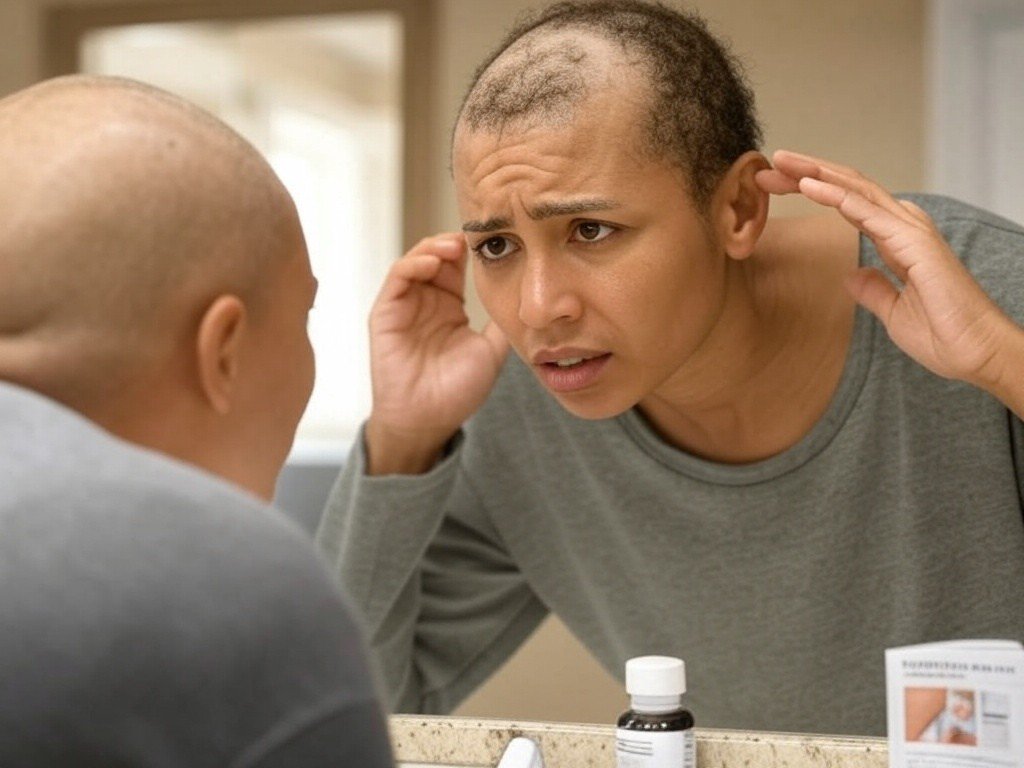
Alopecia Areata is more than just hair loss. For many, it’s a challenging journey intertwined with physical symptoms and emotional struggles. This autoimmune condition, which affects nearly 7 million people in the United States, causes patchy hair loss on the scalp and other areas of the body. While Alopecia Areata is not life-threatening, its impact can be profound, influencing self-esteem, mental health, and daily life.
What Causes Alopecia Areata?
Alopecia Areata occurs when the immune system mistakenly attacks healthy hair follicles, treating them as foreign invaders. This immune response halts hair growth, leading to hair falling out in round or coin-sized patches. Despite extensive research, the exact cause remains unclear, but several factors are believed to contribute:
1. Genetic Predisposition
Research indicates that up to 20% of people with Alopecia Areata have a family member who also experiences the condition, highlighting a significant genetic link. Scientists believe genes related to immune function and hair follicle development may increase susceptibility to this disorder.
2. Autoimmune Reactions
Alopecia Areata often occurs alongside other autoimmune diseases like vitiligo, thyroid disorders, and lupus. Nearly 10-20% of individuals with Alopecia report coexisting autoimmune conditions, suggesting shared pathways in immune dysfunction.
3. Environmental Triggers
While genetics play a major role, environmental factors like viral infections, severe stress, or a lack of sunlight (linked with vitamin D deficiencies) could trigger or worsen hair loss episodes.
Symptoms of Alopecia Areata
Alopecia Areata manifests primarily through hair loss, but there are other indicators to watch out for. Symptoms may vary based on the type and severity of the condition:
1. Patchy Hair Loss
The most common symptom is hair loss in small, circular patches. These can occur on the scalp, eyebrows, beard, or other parts of the body.
2. Nail Changes
Up to 30% of individuals experience nail irregularities such as pitting, roughness, or white spots.
3. Sensations on the Scalp
Some describe itching, burning, or tingling sensations before a hair loss episode.
Types of Alopecia Areata
- Alopecia Totalis: Total loss of scalp hair.
- Alopecia Universalis: Loss of all body hair, including eyebrows and lashes.
- Diffuse Alopecia Areata: Sudden thinning of hair across the entire scalp.
- Ophiasis Pattern: Hair loss along the sides or back of the scalp.
How Is Alopecia Areata Diagnosed?
Diagnosis typically begins with a dermatologist evaluating visible hair loss and medical history. Complementary tests might include:
- Scalp Biopsy to rule out fungal infections or other skin diseases.
- Blood Tests to check for other autoimmune disorders.
- Dermoscopy, a device that magnifies the scalp, to assess hair follicle health.
Early detection is crucial for effective treatment and management.
Treatment Options for Alopecia Areata
While there’s no definitive cure for Alopecia Areata, several treatment options can help regrow hair or manage symptoms. Treatments depend on the severity, location, and duration of hair loss.
1. Topical Treatments
-
-
- Corticosteroids: Creams or ointments reduce inflammation around the hair follicles.
- Minoxidil (Rogaine): A topical medication that promotes hair regrowth, though results may take 3-6 months.
-
2. Injectable Corticosteroids
Effective for mild, patchy hair loss, corticosteroid injections into bald patches stimulate hair follicles. Patients often see improvement within 12 weeks.
3. Oral Medications
-
-
- JAK inhibitors like Baricitinib and Ritlecitinib have shown promise in reducing inflammation and promoting regrowth in cases of severe Alopecia.
- Immunosuppressants, such as Cyclosporine, may help reduce immune system attacks.
-
4. Phototherapy
Phototherapy uses ultraviolet (UV) light to reduce inflammation and stimulate hair growth.
5. Alternative Therapies
-
-
- Some patients try acupuncture, essential oils like rosemary or lavender, and scalp massages. While evidence is limited, these therapies may complement medical treatments by improving scalp circulation.
-
Coping with the Emotional Impact of Alopecia Areata
Hair loss is not just a physical condition; it carries deep psychological effects. Many individuals experience feelings of embarrassment, low self-esteem, and isolation. Here’s how to cope:
1. Connect with Support Groups
Join local or online communities where you can share experiences, gain encouragement, and feel less alone. Look into organizations like the National Alopecia Areata Foundation (NAAF).
2. Seek Counseling
Working with a therapist or counselor can help address feelings of anxiety or depression related to hair loss.
3. Explore Styling Alternatives
Wigs, scarves, and hats are practical ways to regain confidence. Some may find cosmetic solutions like eyebrow microblading or eyelash extensions helpful.
Recent Advances in Treatment
The approval of new JAK inhibitors has revolutionized the way extensive hair loss is treated. These medications offer hope for long-term hair regrowth, especially in Alopecia Universalis cases. Additionally:
- Research is exploring how gut health links to autoimmune hair loss. A diet rich in probiotics and anti-inflammatory foods may improve immune function.
- Advances in stem cell therapy and genetic research could pave the way for a future cure.
Simple Lifestyle Changes That May Help
Though not a substitute for medical therapies, certain lifestyle adjustments can support overall hair and scalp health:
- Diet Optimization: Incorporate biotin, zinc, and vitamin D-rich foods. A Mediterranean diet may offer anti-inflammatory benefits.
- Stress Management: Engaging in yoga, meditation, or journaling can help calm an overstimulated immune system.
- Winter Hair Care: Use a humidifier and moisturize your scalp during colder months to avoid dryness and irritation.
Hope and Support Are Within Reach
Living with Alopecia Areata can feel overwhelming, but it’s important to remember that you’re not alone. With advances in science, supportive communities, and emotional resilience, many individuals learn to manage and even thrive with this condition. Continued research into autoimmune diseases and hair loss will likely bring even better solutions in the future.
Take that first step towards understanding your unique condition, and consult a dermatologist to explore the treatment options right for you.







